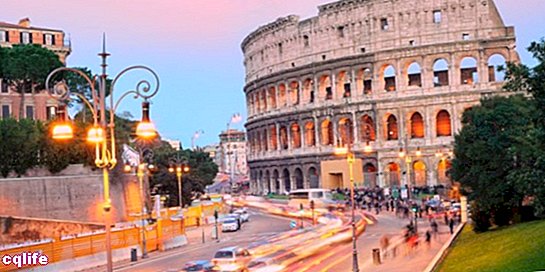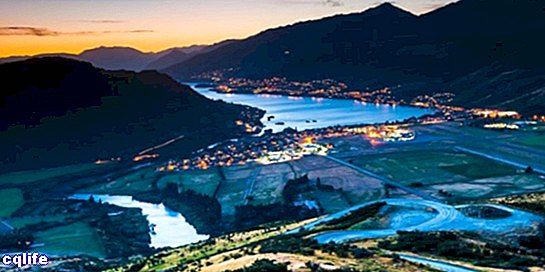- What is geographic space?
- Types of geographic space
- Characteristics of the geographic space
- Components of geographic space
- Examples of geographic space
We explain what a geographic space is and what its components are. Also, characteristics, examples and how they are classified.

What is geographic space?
In geography, geographic space is understood to be the specific way in which a society is organized in the space physical that occupies; or to the physical space itself, once it has been organized by a specific society.
Put in simpler terms, this concept refers to the way in which societies interrelate with their environment, structured in various "scenery”: natural, humanized, agrarian, industrial, urban, etc. It can be used as a synonym for territory.
In this way, when studying the geographic space of a society, we must refer to its economic, political, social and cultural organization; elements that in geography are usually represented as a set of nodes, lines, areas or flows, according to what the analysis space.
Therefore, some dynamics are static and stable (such as the use of the I usually), while others are mobile and fluid (such as transportation).
This concept is used in the different schools of geography, although more widely in the human geography. Its logic is usually that of starting from the visible, to highlight the processes that gave rise to it and the dynamics that, present or absent, built the landscape that is observed.
Types of geographic space
There is no specific typology of geographic spaces, since these can be of as many types as they have characteristics. However, it is usually distinguished, based on the degree of human participation in the formation of a given space, between:
- Geographical areas intervened. Those in which human activity of any kind has been essential for the construction of a geographical space, as is the case of cities.
- Geographical spaces not intervened. Those who are unrelated in their constitution to the activities of the humanity, how can it be a desert, for example.
Characteristics of the geographic space

The geographic space encompasses two fundamental perspectives:
- Location perspective. It refers to the location, that is, the geographical location.
- Ecological perspective. Refers to beings that inhabit it.
Each one considered as a system in operation in space, thus allowing three different forms of study: spatial analysis, landscape analysis and ecological-environmental analysis.
On the other hand, geographical space is cumulative, that is, it contains in itself the traces of its own history, which can be traced in its evolution in a similar way to how biologists do with the process. evolutionary. In other words, the traces of previous societies modify the geographical space and make it unique, as well as the dynamics of current societies.
There is also the possibility that elements from different historical times overlap in geographic space, say, medieval and modern, or industrial and post-industrial elements. This concept is being transformed by the dynamics of the society of Information of the XXI century, to give rise to new forms of territoriality, such as digital.
Components of geographic space
The following components are attributed to the geographic space:
- Natural Those who obviously do not depend on the meddling of Humans, but respond to the nature. moutains, valleys, lakes, seas, are examples of it.
- Social. Those that come, on the other hand, from human activities that concern the dynamics of creating a community, such as religious activities, nationalities, state themselves, etc.
- Politicians. Those that derive from the way the can is organized in human society, that is, they respond to pacts, agreements or historical impositions, such as the delimitation of the nations of the planet, the socio-political organization of their territories, etc.
- Economical Those that are the result of the numerous dynamics of production and consumption that humanity carries out to satisfy its own needs, such as flows of capitals, the social classes, etc.
- Cultural Those that come from the particular way of seeing the world that a human community preserves throughout the generations, such as the traditions localities, language, gastronomy, etc.
Examples of geographic space

The concept of geographic space can be so broad that it is often difficult to point out examples without falling into the obvious. A home can be a geographic space, as well as a town in which it is located, or the valley in which the city was built, or the Mountain range whole of which said valley is a part.
On a larger scale, the geographic space can also be considered region of the country in which the mountain range is located, or the entire country, or the continent where it is, or the entire globe. Everything will depend on the perspective and the specific interests of the moment.
